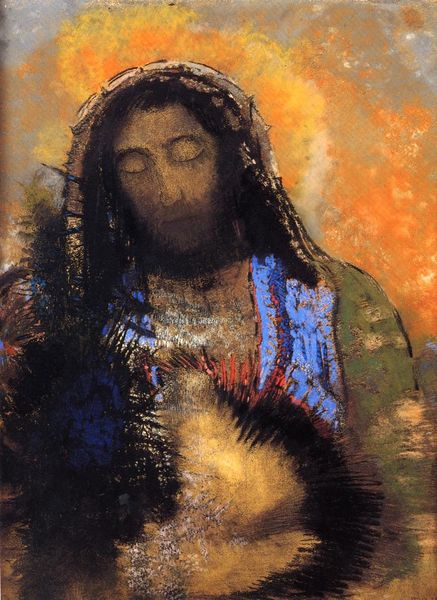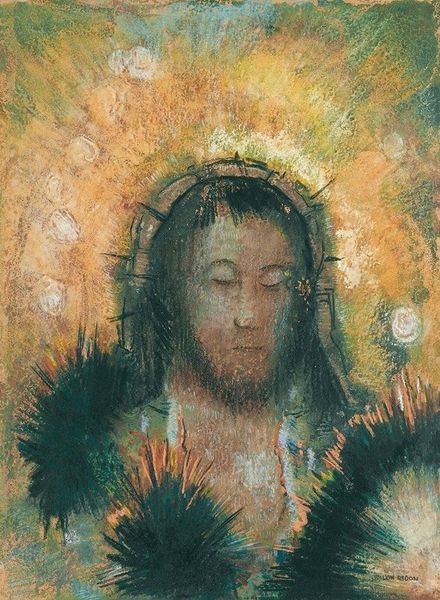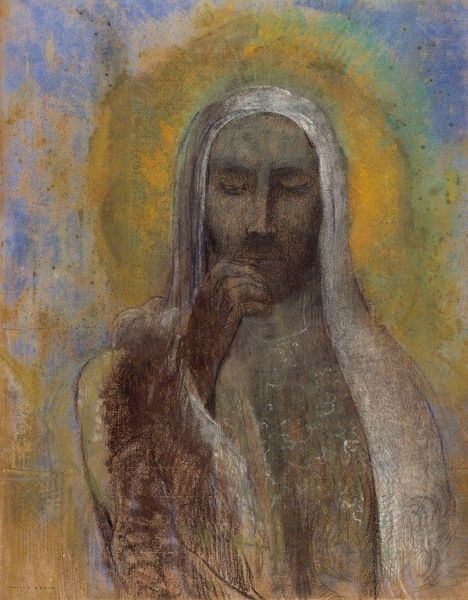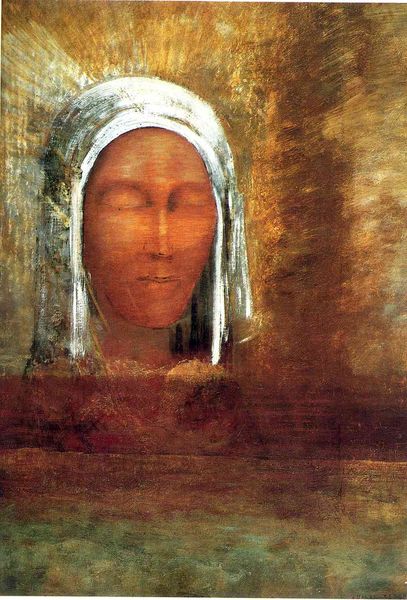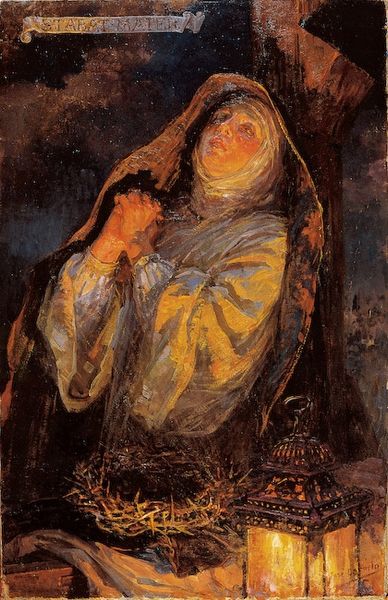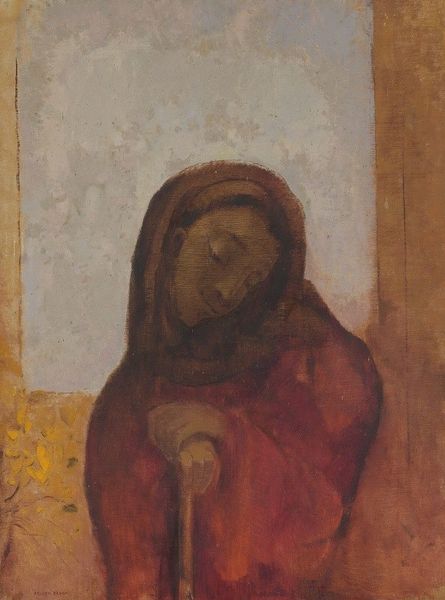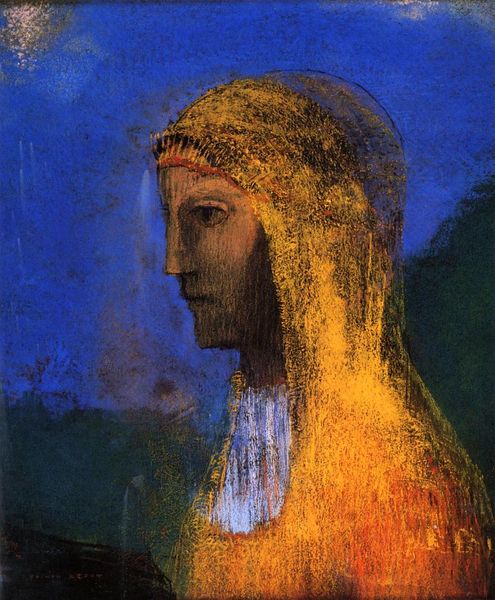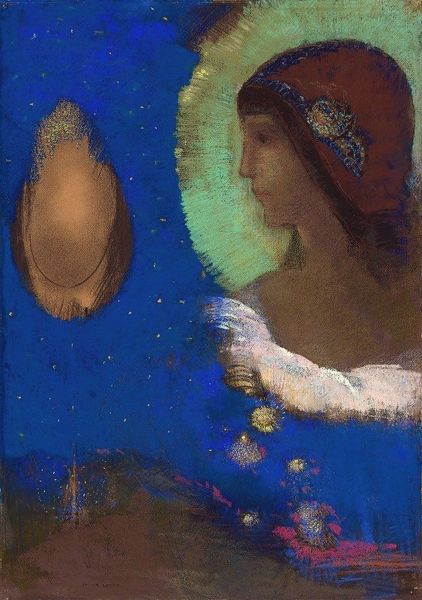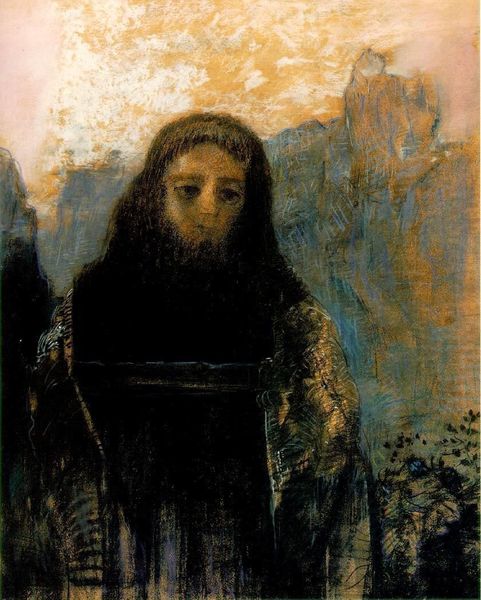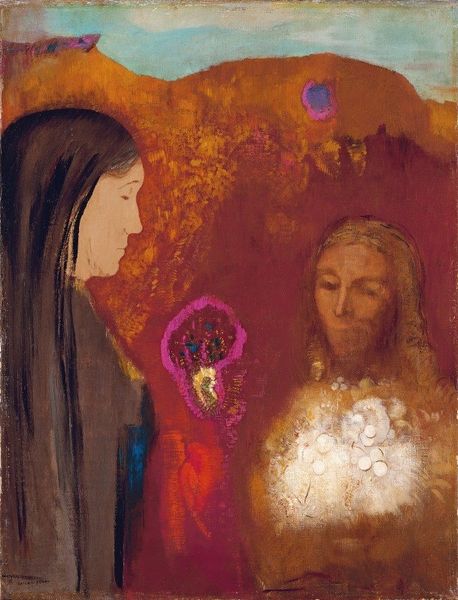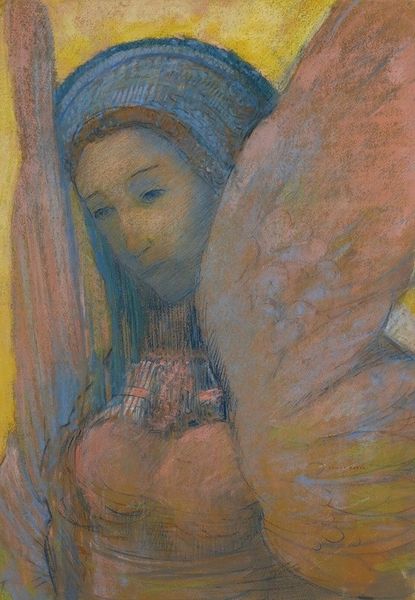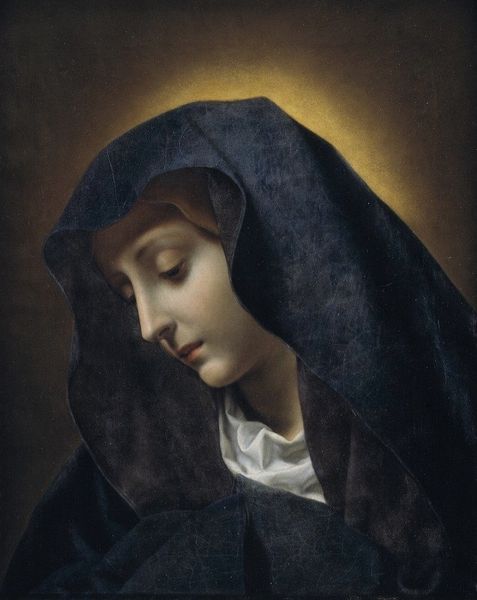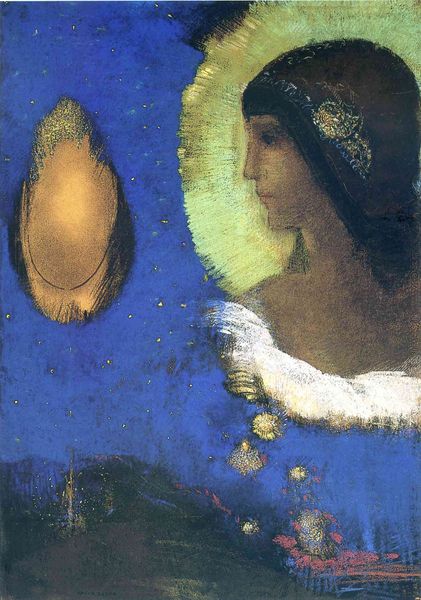
painting, oil-paint
#
portrait
#
painting
#
oil-paint
#
oil painting
#
abstraction
#
symbolism
#
portrait art
Copyright: Public domain
Editor: Here we have Odilon Redon's "Buddha," created in 1906. It's an oil painting that immediately strikes me as both serene and otherworldly. I am wondering about the symbolic meanings behind the colors and the somewhat ambiguous figure. How do you interpret this work, considering its historical context? Curator: It's crucial to remember that Redon’s symbolist approach occurred in the late 19th/early 20th century amidst vast colonial expansion and increasing fascination (and appropriation) of Eastern philosophies in the West. Given the period, this portrayal reflects more about Western perceptions and projections than any genuine understanding of Buddhist teachings. The "exotic" subject would have been especially appealing at that time for a number of reasons related to the politics of imagery, what do you think some might be? Editor: Well, perhaps a longing for spiritual alternatives to Western materialism? Or maybe it speaks to the “otherness” projected onto non-Western cultures, seen as mystical or primitive? Curator: Precisely! The art market was and still is shaped by such interests, framing certain works and artists as uniquely spiritual or transcendent, thereby influencing their perceived value. Now think about how institutions display this and works with similar political weight? Editor: It makes me wonder how much Redon was consciously engaging with these dynamics, and how much he was simply swept up in them. I guess the public display shapes these issues of Orientalism. Thank you! Curator: Exactly. Reflecting on this helps us become more critical viewers.
Comments
No comments
Be the first to comment and join the conversation on the ultimate creative platform.
